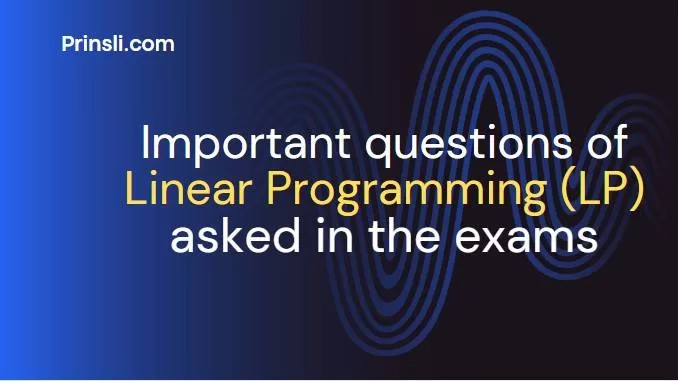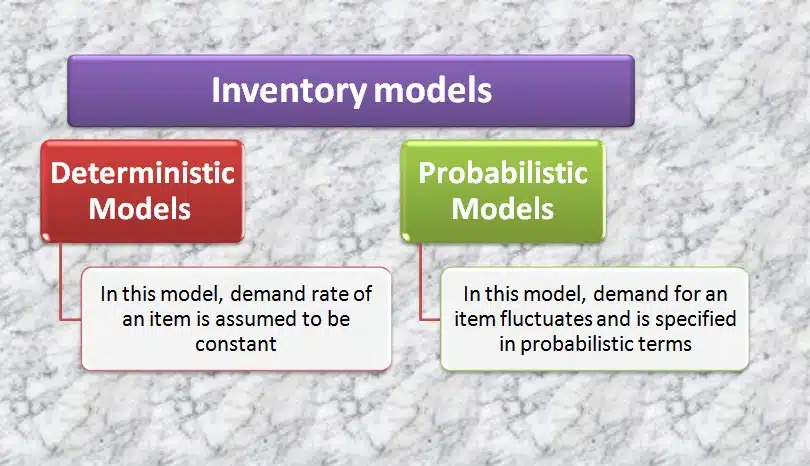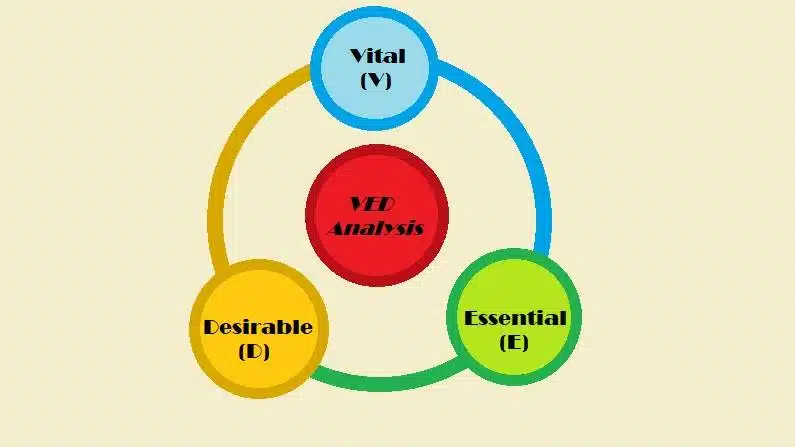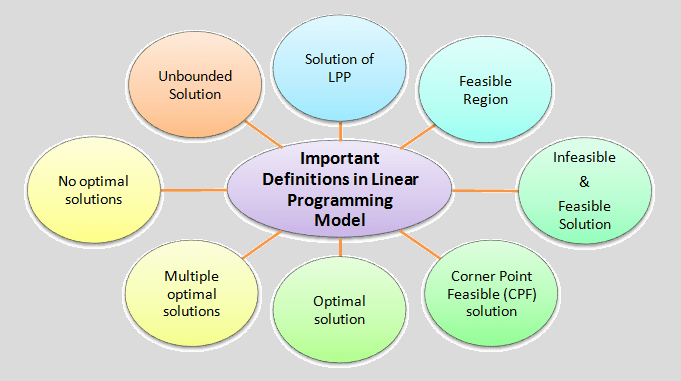
List of important theoretical questions of “Linear Programming (LP)” asked in Postgraduate Exams-
I can’t give you exact questions from past exams. However, I can provide you with many example questions covering various topics in Linear Programming (LP). These are commonly asked in postgraduate exams. Here’s a selection of 100 important theoretical questions across different areas of Linear Programming (LP):
Basic Concepts and Terminology:
- Define linear programming and discuss its applications.
- Explain the components of a linear programming problem.
- What is an objective function, and what role does it play in LP?
- Define decision variables and constraints in LP.
- Discuss the difference between feasible and infeasible solutions in LP.
Formulation of LP Problems:
- Describe the steps involved in formulating a linear programming problem.
- Explain how to identify decision variables in a given problem.
- Discuss the process of setting up the objective function in LP.
- What are constraints, and how are they formulated in LP?
- Provide examples of real-world problems that can be formulated as LP models.
Graphical Method:
- Describe the graphical method for solving LP problems.
- Explain how to graphically represent the objective function and constraints.
- Discuss the concept of feasible region in LP.
- How do you determine the optimal solution using the graphical method?
- What are the limitations of the graphical method in LP?
Simplex Method:
- Discuss the simplex method for solving LP problems.
- Describe the steps involved in the simplex algorithm.
- What is a basic feasible solution, and how is it obtained?
- Explain the concept of pivoting in the simplex method.
- Discuss the termination criteria for the simplex algorithm.
Duality in LP:
- Define the dual problem in linear programming.
- Explain the relationship between primal and dual LP problems.
- Discuss the significance of the dual problem in LP.
- What is the dual simplex method, and how does it work?
- Describe the interpretation of dual variables in LP.
Sensitivity Analysis:
- Define sensitivity analysis in the context of LP.
- Explain how changes in objective function coefficients affect the optimal solution.
- Discuss the impact of changes in right-hand side values on the optimal solution.
- What is the shadow price, and how is it interpreted in LP?
- Describe the concept of allowable ranges for coefficients in LP.
Integer Programming:
- Define integer programming and discuss its applications.
- What is the difference between integer and linear programming?
- Explain the concept of binary variables in integer programming.
- Discuss the branch and bound method for solving integer programming problems.
- Describe the applications of integer programming in real-world scenarios.
Advanced LP Topics:
- Define mixed-integer programming and discuss its challenges.
- Explain the concept of non-linear programming and its extensions.
- Discuss the use of LP in network flow problems.
- What are the applications of LP in production planning and scheduling?
- Describe the concept of goal programming and its objectives.
LP Software Tools:
- Discuss popular software tools used for solving LP problems.
- Explain the features and capabilities of linear programming software.
- How do you formulate and solve LP problems using software tools?
- Discuss the advantages and limitations of LP software.
- Provide examples of industries where LP software is commonly used.
Applications of LP:
- Discuss the use of LP in resource allocation problems.
- Explain how LP is applied in supply chain management.
- Describe the role of LP in project management and scheduling.
- Discuss LP applications in finance and portfolio optimization.
- Provide examples of LP models used in transportation and logistics.
LP in Decision Making:
- Discuss how LP models can support decision-making processes.
- Explain how sensitivity analysis helps in making decisions based on LP models.
- Describe the use of scenario analysis in LP-based decision making.
- Discuss the role of LP in optimizing resource allocation under uncertainty.
- Provide examples of managerial decisions supported by LP models.
Limitations and Challenges of LP:
- Discuss the limitations of LP models in real-world applications.
- Explain the challenges of solving large-scale LP problems.
- What are some common pitfalls in formulating LP models?
- Discuss the computational complexity of solving LP problems.
- How do you address uncertainty and variability in LP models?
LP Extensions and Variants:
- Define multi-objective programming and its objectives.
- Discuss the concept of fuzzy linear programming.
- Explain the applications of stochastic linear programming.
- Describe the use of game theory in modeling competitive situations.
- Discuss the integration of LP with other optimization techniques.
LP in Sustainability and Social Responsibility:
- Discuss how LP can be used to address sustainability challenges.
- Explain the role of LP in optimizing resource use and reducing waste.
- Describe LP applications in sustainable transportation and logistics.
- Discuss the use of LP in designing environmentally friendly supply chains.
- How can LP models be used to promote social responsibility in business operations?
Ethical Considerations in LP:
- Discuss ethical issues related to LP modeling and decision making.
- Explain the importance of transparency and accountability in LP models.
- Describe the potential impact of LP decisions on stakeholders.
- How do you ensure fairness and equity in LP-based decision making?
- Discuss the role of ethical guidelines and standards in LP practice.
Emerging Trends in LP:
- Discuss recent advancements in LP algorithms and techniques.
- Explain the use of machine learning and artificial intelligence in LP.
- Describe the role of big data analytics in enhancing LP capabilities.
- Discuss the integration of LP with emerging technologies such as blockchain.
- How do you see LP evolving in response to global challenges and opportunities?
Case Studies and Real-World Examples:
- Provide examples of successful LP implementations in industry.
- Discuss case studies where LP models have led to significant cost savings.
- Explain how LP has been used to improve operational efficiency in organizations.
- Describe real-world challenges addressed by LP-based decision making.
- Discuss the lessons learned from implementing LP projects in practice.
LP Education and Training:
- Discuss the importance of LP education and training in academia.
- Explain the key concepts and skills taught in LP courses.
- Describe the role of hands-on experience and case studies in LP training.
- How can universities and training programs prepare students for LP careers?
- Discuss the need for continuous learning and professional development in LP.
LP Research and Innovation:
- Describe current research trends and topics in LP.
- Discuss interdisciplinary approaches to LP research.
- Explain the importance of collaboration and knowledge sharing in LP.
- Discuss the role of academic journals and conferences in advancing LP research.
- How can industry partnerships support LP innovation and development?
LP in Government and Public Policy:
- Discuss the use of LP in government decision making and policy analysis.
- Explain how LP models can inform public sector resource allocation.
- Describe LP applications in infrastructure planning and public services.
- Discuss the role of LP in addressing social and economic challenges.
- How can LP contribute to evidence-based policymaking and governance?
These questions cover a wide range of theoretical concepts, applications, and considerations in Linear Programming (LP) commonly asked in postgraduate exams. This list covers a wide range of topics commonly included in postgraduate exams. Each topic contains multiple questions to provide a comprehensive overview of the subject matter.
Copyrighted Material © 2019 - 2024 Prinsli.com - All rights reserved
All content on this website is copyrighted. It is prohibited to copy, publish or distribute the content and images of this website through any website, book, newspaper, software, videos, YouTube Channel or any other medium without written permission. You are not authorized to alter, obscure or remove any proprietary information, copyright or logo from this Website in any way. If any of these rules are violated, it will be strongly protested and legal action will be taken.




Be the first to comment